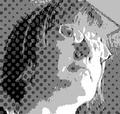Cited By
View all- Resor E(2024)Simple Scores are Messy Signals: How Users Interpret Scores on Real Estate PlatformsProceedings of the ACM on Human-Computer Interaction10.1145/36869358:CSCW2(1-25)Online publication date: 8-Nov-2024
- Gaver WBoucher A(2024)Designing with Data: An Annotated PortfolioACM Transactions on Computer-Human Interaction10.1145/368527231:6(1-25)Online publication date: 30-Jul-2024
- Cavdir D(2024)Auditory-Tactile Narratives: Designing New Embodied Auditory-Tactile Mappings Using Body MapsProceedings of the 19th International Audio Mostly Conference: Explorations in Sonic Cultures10.1145/3678299.3678310(105-115)Online publication date: 18-Sep-2024
- Show More Cited By


